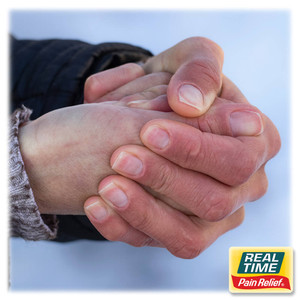What You Need to Know When Recovering from an Injury
13th Apr 2022
Are you dealing with a recent injury? It can be a trying time period. Here are some tips to help you have an optimal recovery.
Injuries happen to all of us at some point. Regardless of its cause, all injuries need a recovery period. While our bodies will work very hard to recover on their own, how we treat them during this healing process is very important. Without the proper time to heal, our bodies are more susceptible to recurring injuries and chronic pain.
Follow these steps for a healthy recovery from any injury:
1. Allow Time to Heal
Patience is a muscle, haven’t you heard? The only way to become more patient is by practicing patience. Isn’t that a little annoying? Either way, in regards to an injury it is imperative to be patient. Dependent on the injury, this may mean little to no movement at all, especially for the first 48 to 72 hours. However, some injuries may permit utilizing alternative means of activity. While taking the time to allow your body to heal, be sure to:
- Take Advice From Your Doctor on Your Specific Injury
- Feed Your Body the Proper Nutrients
- Stay Hydrated
- Ice, Compress, Elevate, If Permitted
- Apply a Topical Pain Relief Lotion for Temporary Relief
2. Do Not Underestimate Mental Health
A physical injury can most certainly affect you mentally. Whether it is inhibiting you from your everyday activities, regressing your progress from a specific goal, or making you more reliant on others, injury can feel like an inconvenience. However, remember that these types of things happen and all you can do is nurture your body and understand your frustrations. Taking the time to relax may seem counterintuitive when you are focused on recovery, but your time is well spent if you use it to focus on stress management. Here are some ideas to practice during this free time:
- Practice breathing exercises
- Ensure you get proper sleep
- Spend your time doing something that you enjoy but doesn’t aggravate your injury like reading, crossword puzzles, watching a documentary, learning something new, jigsaw puzzle, etc.)
3. Start Slow
When your body is ready (and I mean, really ready) to add some movement, start slow. The first priority is to regain range of motion in the injured area. This is crucial during the healing process because without proper range of motion our bodies will learn incorrect movement patterns, which can cause more issues in the future. To regain range of motion it may mean doing simple exercises such as writing the alphabet in the air with your foot, doing circles with your wrist, bending your knee gradually, or working your way up to putting your arm over your head. These are only general guidelines for different joint issues; consult with a professional for what your first steps of movement should be for your injury.
4. Regain Strength
Once you are confident doing most of your regular, functional activities, such as walking, reaching, and bending, it is time to try to regain strength in the injured areas. This, too, is something to go about slowly. With the guidance of a trained health professional, you may begin gradually challenging yourself to further strengthen the weakened muscles. It is best to focus on doing repetitive motions rather than heavier loads. For example, practice a movement 10 times for 3 rounds with a lightweight dumbbell, rather than attempting heavier weights, if appropriate. Other low-impact alternatives are available such as swimming and specific body weight exercises.
5. Build Up Duration
It takes a careful balance of activity to not over-stress your body while working yourself back to your previous ability. During this step of recovery, it is important, as always, to gradually increase the time of exercise. If it is the matter of walking, build up to a mile. If it is your upper body that is healing, focus on carrying lighter weights for longer periods of time increasing by what you feel comfortable with, but making sure it is more and more each session.
Tip: After your recovery exercises, you might be worn out and a little sore. It is a good time to apply some topical pain relief lotion to get relief.
6. Find Your Confidence
It is very normal to not feel as confident as you did before your injury. Take your time working through the previous steps before going back to regular activity. Lack of confidence can result in re-injury and no one wants to go through that!
For over 20 years, families across the U.S. have turned to Real Time’s lotions and creams for PAIN RELIEF YOU CAN TRUST®. From Lifestyle Essentials, through our Nujuvena line, to Pain Relief Formulas, Real Time has you covered.
LEARN MORE





